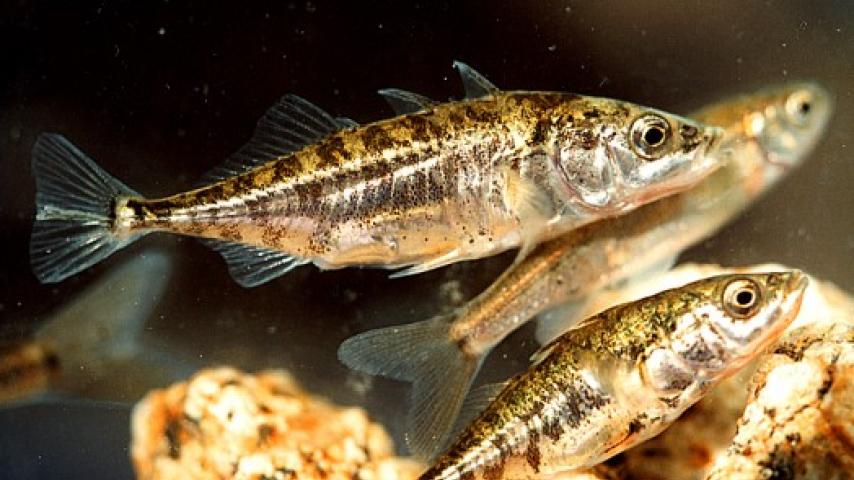Three-spined Stickleback (Gasterosteus aculeatus)
Small fish (to 7.5 cm), Three-spined Sticklebacks are easily identified by the three stiff, sharply pointed spines in their dorsal fins and pair of spines in the two pelvic fins.

KINGDOM Animalia - PHYLUM Chordata - CLASS Osteichthyes - ORDER Gasterosteiformes - FAMILY Gasterosteidae
Those in most marine populations also have prominent bony plates along their sides, but these plates are fewer or even lacking in freshwater populations.
The five strategically located spines provide an excellent defense against many types of predators, particularly fishes. Nevertheless, they are primary food for many fishes, for example trout and pike. Not so effective against birds, there are records of a pair of loons consuming 50,000 sticklebacks during six months. Still, fish-eating birds are sometimes found dead or incapacitated, a stickleback with all fins erect stuck in their throat.
This common species is the subject of much research. It has been found that populations in lakes with more fish predators develop more bony plates. Where predators are absent, the plates may be absent. This variation is genetically based. More recently, populations have been discovered that lack spines or are much larger or smaller than the norm. The genetic basis of this is being studied, the evolutionary basis presumably predation pressure.
Stickleback breeding has also been the subject of long-term research. Male sticklebacks change color during the breeding season, becoming bright red below. Females develop eggs and become swollen with them. A breeding male that encounters such a female immediately performs a zigzag dance, and the two enter into a complex interaction that ends with the male leading the female into an already prepared nest, where she lays her eggs and in turn he fertilizes them.
After the eggs hatch, the male guards the young, taking them out for foraging and then leading them back to the nest if danger threatens. The adults typically die after breeding, but with the larger females laying 300 eggs in a clutch, they are survived by a lot of young. In a stable stickleback population, only two of those young must survive to maturity.
Sticklebacks eat small crustaceans and insects. During the breeding season, some males specialize in sneaking into nests and eating the eggs of other males! Others go around in schools and raid nests for the same purpose.